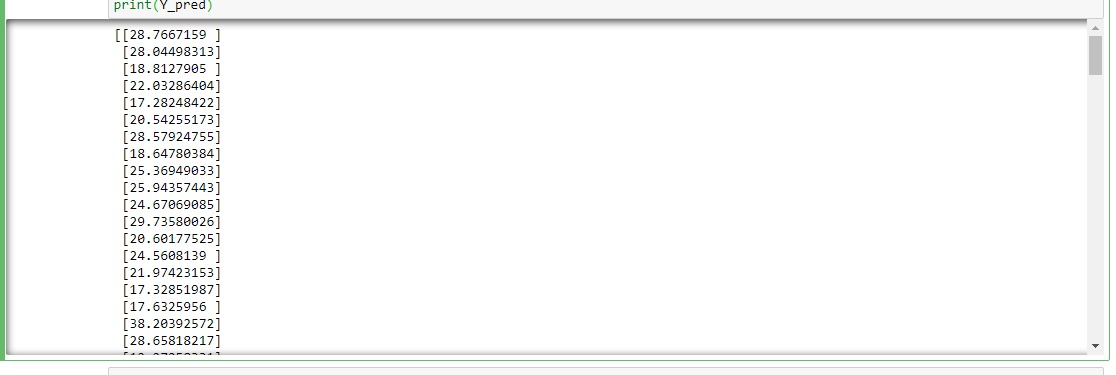PLS回归是一个回归方法,考虑到在两个数据集中的潜结构。偏最小二乘回归在两个single-label和multi-label学习的原因基于MRI的评估表现良好。 PLSRegression从PLS获取与模式=” A”和deflation_mode =”回归”。另外,在一维响应的情况下,已知的PLS2或PLS。
用法:class sklearn.cross_decomposition.PLSRegression(n_components=2, *, scale=True, max_iter=500, tol=1e-06, copy=True)
参数:
该函数接受被上述和下面定义的五个参数:
- n_components:<int>:其默认值为2,它接受需要保留的组件数。
- 规模:<布尔>:其缺省值为True,并且它接受是否缩放数据或没有。
- max_iteran:<int>的:它的默认值是500,并且它接受NIPALS内部循环迭代的最大数量。
- 收费:<非负实数>:其默认值为1e-06,它接受迭代算法中使用的容差。
- 复制:<bool>:其默认值为True,它表明应该对副本进行偏转。当默认值设置为true不要在意副作用。
返回值:PLSRegression是预测响应的方法。
在下面的实施例说明了如何使用PLSRegression()模型。
例:
Python3
import numpy as np
import pandas as pd
from sklearn import datasets
import matplotlib.pyplot as plt
from sklearn.cross_decomposition import PLSRegression
from sklearn.model_selection import train_test_split
# load boston data using sklearn datasets
boston = datasets.load_boston()
# seprate data and target values
x = boston.data
y = boston.target
# tabular data structure with labeled axes
# (rows and columns) using DataFrame
df_x = pd.DataFrame(x, columns=boston.feature_names)
df_y = pd.DataFrame(y)
# create PLSRegression model
pls2 = PLSRegression(n_components=2)
# split data
x_train, x_test, y_train, y_test = train_test_split(
df_x, df_y, test_size=0.30, random_state=1)
# fit the model
pls2.fit(x_train, y_train)
# predict the values
Y_pred = pls2.predict(x_test)
# plot the predicted Values
plt.plot(Y_pred)
plt.xticks(rotation=90)
plt.show()
# print the predicted value
print(Y_pred)输出:
使用PLSRegression绘制预测值

使用训练模型打印的预测值

相关用法
- Python Wand function()用法及代码示例
- Python Sorted()用法及代码示例
- Python Numbers choice()用法及代码示例
- Python Tkinter askopenfile()用法及代码示例
- Python ord()用法及代码示例
- Python sum()用法及代码示例
- Python round()用法及代码示例
- Python id()用法及代码示例
- Python vars()用法及代码示例
注:本文由纯净天空筛选整理自adityakumar27200大神的英文原创作品 sklearn.cross_decomposition.PLSRegression() function in Python。非经特殊声明,原始代码版权归原作者所有,本译文未经允许或授权,请勿转载或复制。
